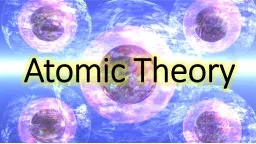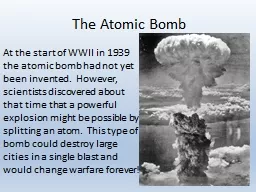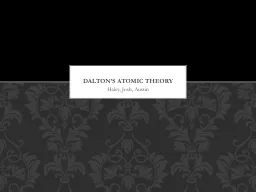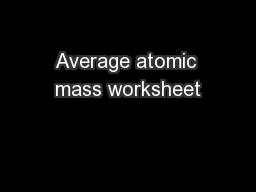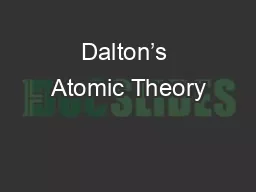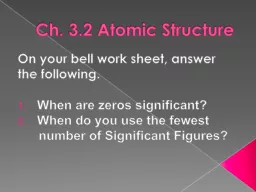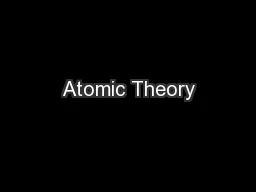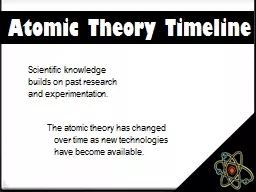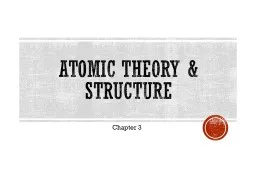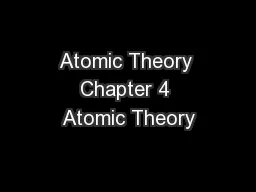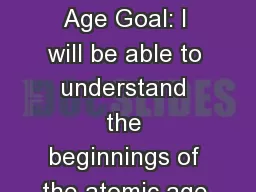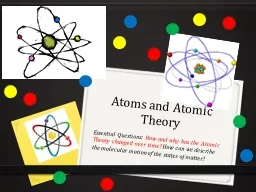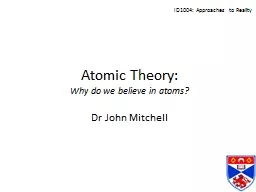PPT-Atomic Theory Origin
Author : tatyana-admore | Published Date : 2019-12-09
Atomic Theory Origin The earliest recorded idea about the existence of atoms comes from a Greek philosopher named Democritus 400 BC He theorized that if you were
Presentation Embed Code
Download Presentation
Download Presentation The PPT/PDF document "Atomic Theory Origin" is the property of its rightful owner. Permission is granted to download and print the materials on this website for personal, non-commercial use only, and to display it on your personal computer provided you do not modify the materials and that you retain all copyright notices contained in the materials. By downloading content from our website, you accept the terms of this agreement.
Atomic Theory Origin: Transcript
Download Rules Of Document
"Atomic Theory Origin"The content belongs to its owner. You may download and print it for personal use, without modification, and keep all copyright notices. By downloading, you agree to these terms.
Related Documents

